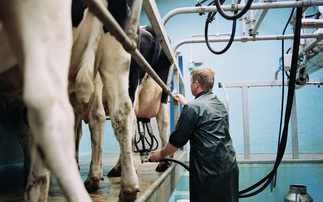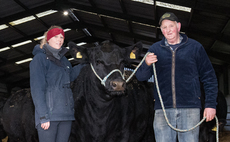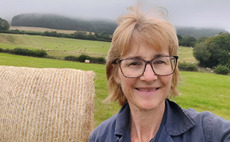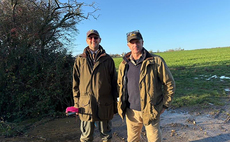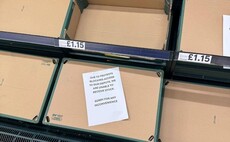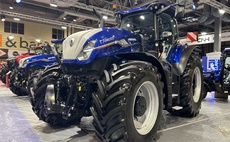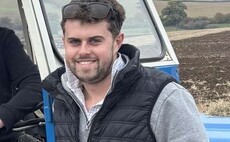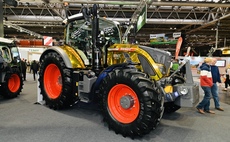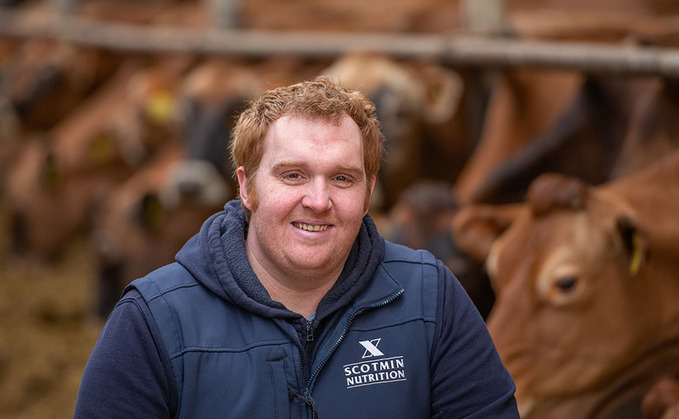
Cutting grass at the optimum stage and applying a silage additive are just some of the reasons one all-year-round housed herd is producing nearly 50% milk from forage.
Farm manager, Scott McGill is adamant quality forage should form the backbone to any dairy farm, regardless of system or whether cows are grazed or housed.
It is this attitude which means nearly half of the milk produced by the 450-cow, all-year-round housed Jersey herd at Kerricks Farm, Dumfries, comes from forage.
For Mr McGill, who has a background in block calving, grass-based systems, it all comes back to profitability.
"Producing quality forage has been drilled into me so it's something I focus on a lot.
The same principles should apply whether cows are grazed or housed.
It's all about driving efficiencies," he says.
"If we can grow a decent, high energy, high protein feed, why not do it?" Two-thirds of the forage component of the ration comes from grass silage, with the rest from maize.
Cows also receive a home-mixed blend of Hipro Soya, sugar beet pulp and distillers, plus concentrate through the parlour.
With grass silage so important to the diet, the focus is on producing quality, rather than bulky silage, across three cuts (see Top Tips box).
Ecosyl additive is used as standard across all cuts to help safeguard silage quality.
At £1.28/t, Mr McGill thinks it is a no brainer to use a quality additive.
"I don't really see why you wouldn't," he says.
"If it is going to help keep silage cool and help ferment it quicker and keep more nutrients, which the cow can use, then why wouldn't you?"
Tedding
Tedding is a strategy which Mr McGill introduced last year to help achieve a more consistent wilt.
After seeing the potential benefits, he is now committed to using it moving forward.
The decision to ted grass silage came about after experiencing issues with first cut clamp slippage in 2018.
That year's wet, lush first cut simply was not staying in the clamp.
Consequently, Mr McGill sort the advice of Volac's Alan Smith to determine how best to prevent the issue in the future.
Mr Smith suggested that the crop had not been wilted consistently as silage had not been spread out.
This meant the top of the cut crop had dried, while the material underneath had not.
In 2019, all of the silage was tedded out and wilted for around 12 hours.
This achieved a more consistent wilt.
However, hot weather meant the first cut dried out too much to 41% dry matter and 18.9% crude protein and 79% D-value.
With 142 hectares (350 acres) of silage cut in 1-1.5 days and some ground four miles away from the farm, ensuring each field achieves optimum wilt is a challenge.
The fact some fields are sandy loam and prone to drying out, while others are heavy clay, also means different fields dry out at different rates.
With this in mind, this season, only the heavier fields will be tedded out at an additional cost of about £4/acre.
"We need to adapt it to different fields and weather conditions," explains Mr McGill.
"If we can grow a decent, high energy, high protein feed, why not do it?"
That comes back to having young grass.
If you want energy, you need young grass and to cut the grass when it needs to be cut," he says.
Tips for producing and utilising quality grass silage
Scott McGill provides his top tips for making the best possible silage:
Reseed regularly
Cutting new, young grass definitely helps with quality. As the farm is new and we don't know the reseeding history, we have a reseeding policy of two years of wheat, followed by a five-year perennial ryegrass ley without clover
Don't worry about bulk
Cut at the three leaf stage when grass is ready to be cut, rather than working to a date
Consolidate it well; if you think it's rolled enough - it's not.
Our contractor has traditionally used a telehandler and two buck rakes on the clamp. This year they used a loading shovel. At 17 tonnes in weight this has made a major difference to consolidation and helped avoid clamp heating
Pay attention at sheeting up
We use thick gauge side sheets up and over the top and two black sheets, followed by a green net. Then we have touching tyres on top - you cannot see any green net
Push the ration up
We push up the ratio every two hours on average. It takes five minutes, so why not do it? This helps keep intakes up
Maximise palatability
We clean out any old silage from the feed face every morning. We never put new silage on top of old. That increases palatability and intakes. It is about quality silage which smells good and cleaning it up. That's key to driving intakes











